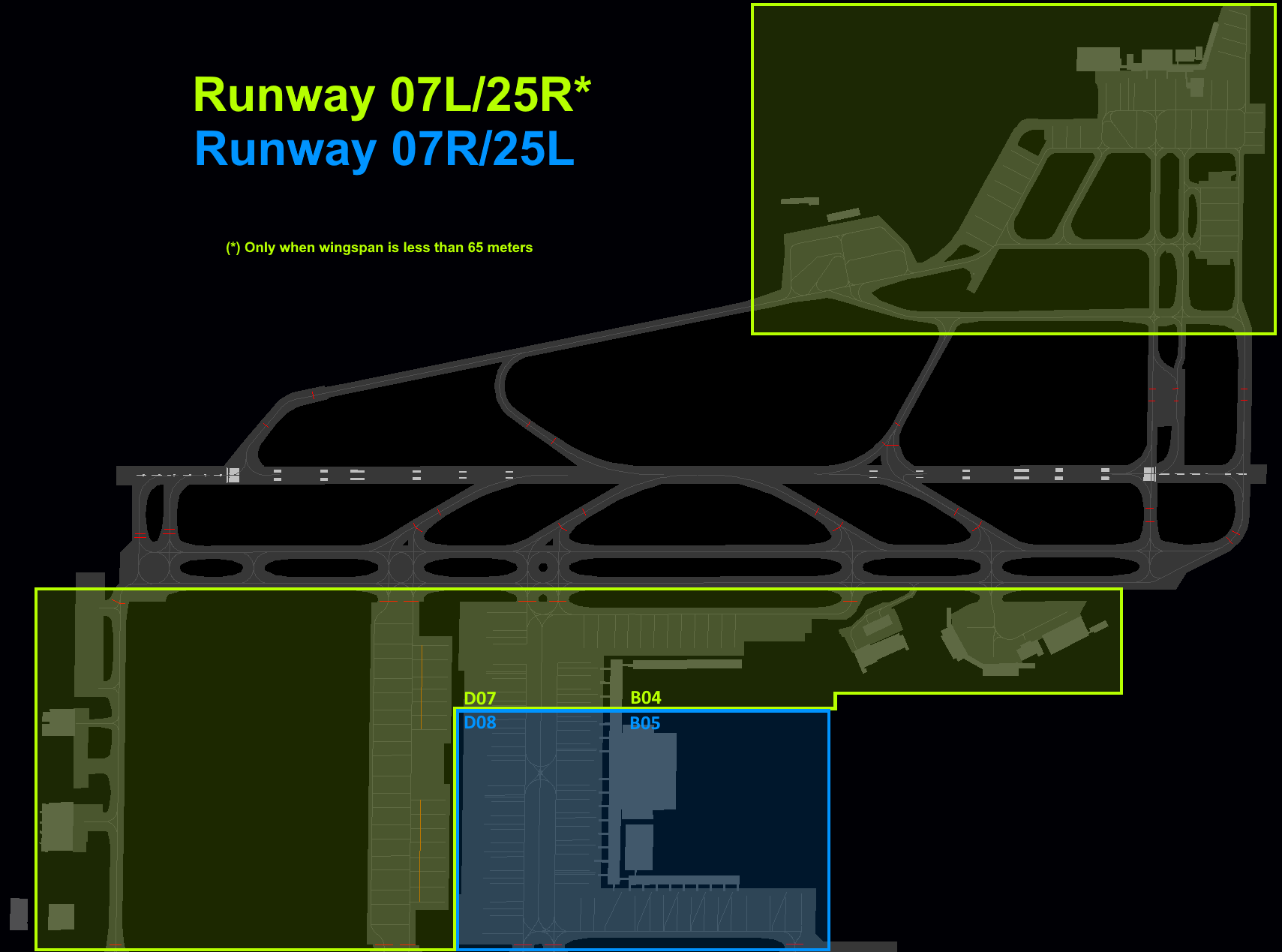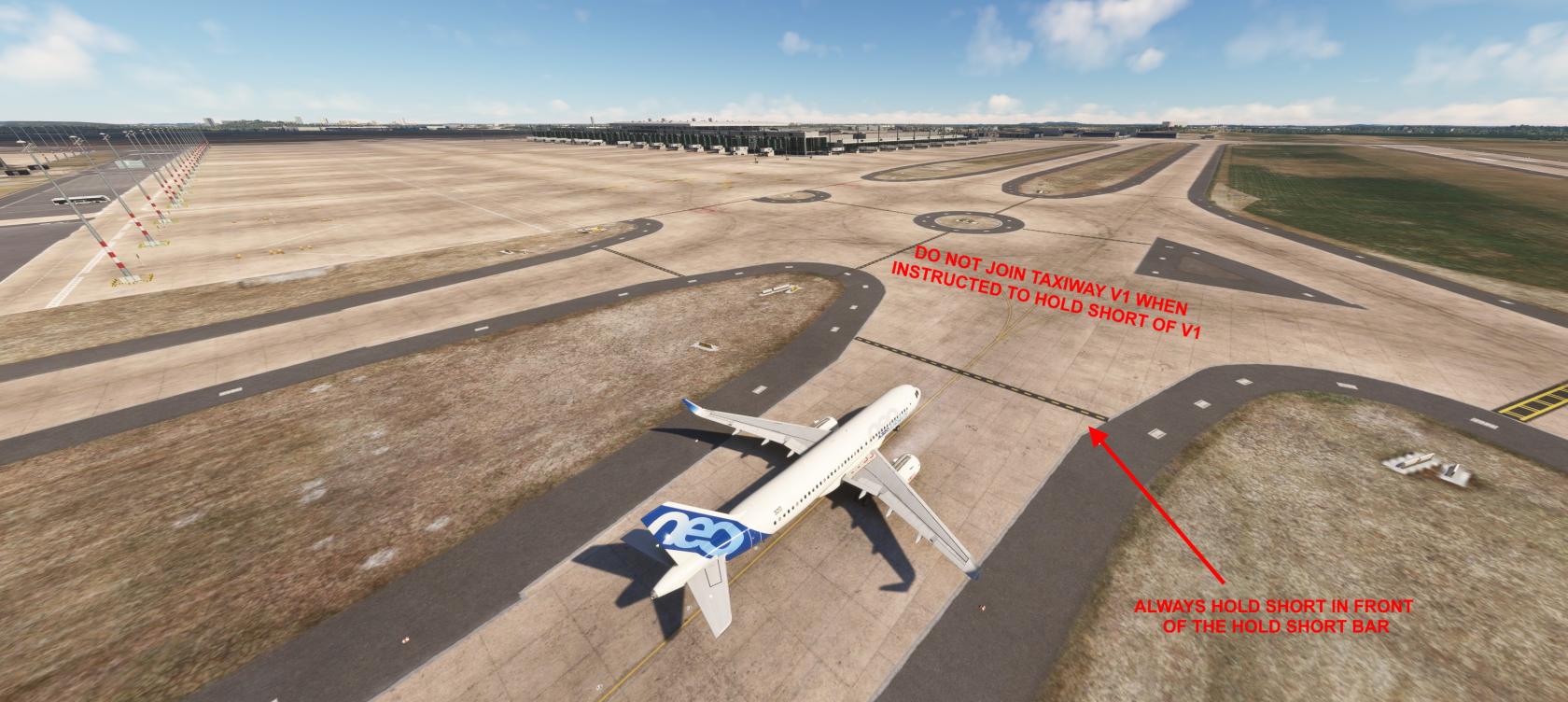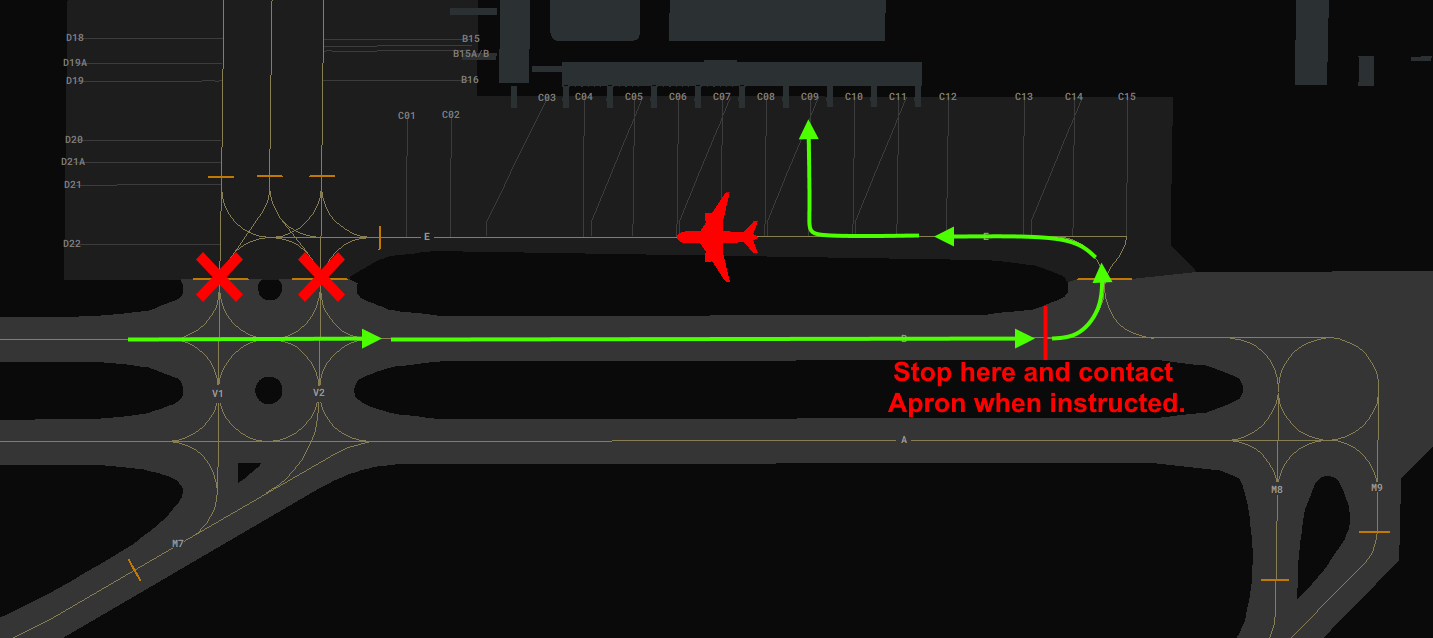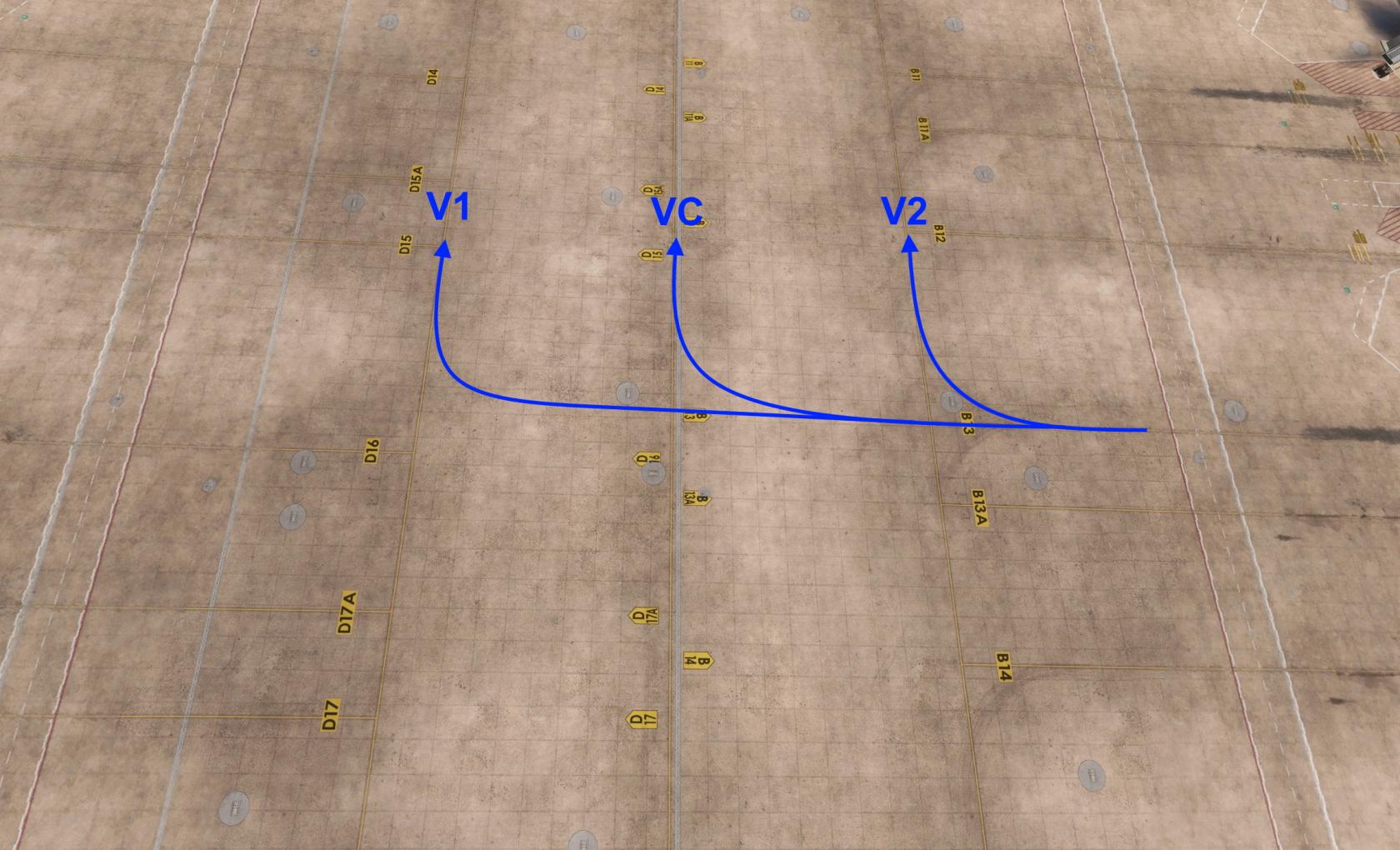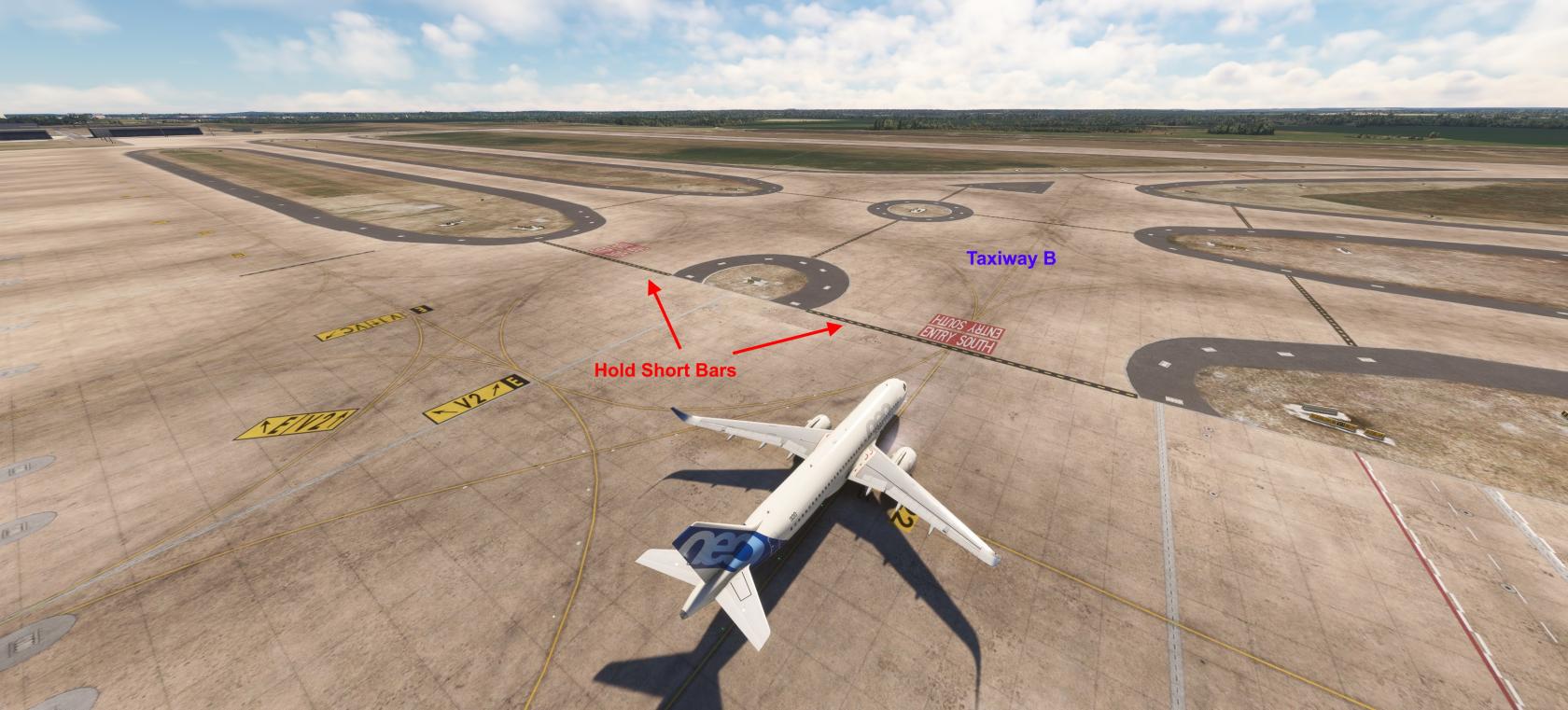Arriving Traffic
DescentIFR PlanningClearance
To
Departure help ATC, please always plan your descent according to the following descent profile restrictions (expand the appropriate section):
Arrivals via OGBER
Route
Descent Planning
Level at OGBER
Holding at OGBER
BATEL T207 OGBER
Cross BATEL at or below FL250
RWY 07: at or below FL100
RWY 25. at or below FL160
Inbound track: 117°
Left Turns
BKD L619 VIBIS T209 OGBER
Cross BKD at or below FL250
Arrivals via KETAP
Route
Descent Planning
Level at KETAP
Holding at KETAP
RODEP T280 OGBER
Cross RODEP at or below FL230
RWY 07: at or below FL160
RWY 25. at or below FL110
Inbound track: 147°
Left Turns
PESEL L87 KETAP
Cross PESEL at or below FL220
BODLA Z717 RAKIT L87 KETAP
Cross BODLA at or below FL200
Arrivals via KLF
Route
Descent Planning
Level at KLF
Holding at KLF
RUDAK T278 KLF
Cross RUDAK at or below FL170
RWY 07: at or below FL080
RWY 25. at or below FL100
Inbound track: 020°
Right Turns
Arrivals via ATGUP
Route
Descent Planning
Level at ATGUP
Holding at ATGUP
ZABEL T202 ATGUP
Cross ZABEL at or below FL210
RWY 07: at or below FL120
RWY 25. at or below FL120
Inbound track: 020°
Right Turns
OSKAN T203 ATGUP
Cross OSKAN at or below FL200
Arrivals via NUKRO
Route
Descent Planning
Level at NUKRO
Holding at NUKRO
ABLOX T204 NUKRO
Cross ABLOX at or below FL220
RWY 07: at or below FL160
RWY 25. at or below FL110
Inbound track: 331°
Right Turns
GOVEN T205 NUKRO (RWY 07)
Cross GOVEN at or below FL180
GOVEN T205 NUKRO (RWY 25)
Cross GOVEN at or below FL120
Expected TrackmilesRunway
Arrivals via OGBER
|
| ||
Arrivals via KETAP
|
| ||
Arrivals via KLF
|
|
Arrivals via ATGUP
|
| ||
Arrivals via NUKRO
|
| ||
InThe contrast to the flight plan, the following distances from the starting point of the transition to the landing may be regarded as the expected flight distance for flight and fuel planning purposes. Any deviations from this may be regarded as a delay situation.
Expected Routing after IAF
Traffic will usually guided via radar vectors or the transition to the final. Please don't program the published standard approach from the IAFs. You'll need to use the Transition including all DB waypoints.
For Berlin, only the corner waypoints of the transition are referenced to the transition procedure in the FMC. Nevertheless, ATC often clears traffic to a waypoint on the downwind or final. If a waypoint is not already part of the transition loaded in the FMC, please enter the instructed waypoint manually in your flight plan.
Runway Assignment
At Berlin, the arrival runway will always be assigned by Berlin Arrival. In most cases, your arrivaldeparture runway is assigned depending on your expectedthe parking positionpositions. to reduce taxi times. Aircraft with a wingspan of 65 m orand more shallwill expectalways get runway 07R/25L.06R/24L assigned. Keep in mind, that Delivery usually will not include your departure runway in the IFR clearance. Your assigned SID is only valid for one specific departure runway.
Datalink Clearance (DCL)
NoteBerlin-Brandenburg thatalso Berlinoffers Arrivalelectronic maydatalink alterclearances (DCL). Usually, the station code is EDDB. If your aircraft does not have a direct integration of the Hoppie system, you can also use the standalone easyCPDLC client.
Requesting clearance electronically is preferred over voice clearances as it reduces frequency congestion thus avoiding delays. Because of this, we ask all pilots able to use the Hoppie ACARS system to do so.
SIDs from theRunway standard06R (Q-SID)
In most cases, traffic departing from runway assignment06R procedurewill ifget requiredassigned duea toSID traffic,with weathera orQ ondesignator. requestPlease frombrief Berlinthis Tower.departure
Highin Intensitydetail, Runwayas Operations
it Towill increasegenerate trafficquite andsome frequencyworkload capacity,for the followingpilot: procedures shall be applied by the pilot arriving at Berlin-Brandenburg.
Change of Frequency to Berlin Director
While being transferred from BREMEN RADAR to BERLIN DIRECTOR, the initial call shall be restricted to CALLSIGN only, to avoid frequency congestion.
Runway Turn-Off Taxiways
To enable the greatest possible throughput of approaches and departures per hour, RWY occupancy times shall be reduced to a minimum. If RWY conditions permit, the following rapid exit TWYs shall be used:
If it is already clear to the pilot on approach that the above TWYs cannot be used, he shall inform aerodrome control of this.
WhenThis landingQ ondeparture runwayroutes 07R,require pleasea onlystrong useright turn-off taxiway M7 when approved by Berlin Tower!
Automatic Handoff to Ground
If stated in the ATIS, after leaving the RWY, the pilot shall immediately change to the frequency of ground control of his own accord and make an initial call. There will be no handoff from Tower to Ground after landing.
Please check the ATIS carefully,turn as theresoon theas automaticyou handoffcross procedure600 willfeet. bePlease described.do not turn earlier or later.
IfYour FMS might not be able to display this procedure correctly. Therefore we recommend flying the automaticinitial handoffright procedureturn manually.
Mit freundlicher Genehmigung der DFS Deutsche Flugsicherung GmbH. Nicht für navigatorische Zwecke geeignet.
Startup Approval
A startup approval is the controller's assurance that you will be cleared to Berlinstart Groundmoving is activewithin the ATISnext few minutes.
Do not start your engines at the gate, unless you have a taxi-out position. Even with startup approval, the engines are started during pushback.
Pushback will display:
be
AFTERissuedVACATINGbyRUNWAYDelivery.07LStartupCONTACT GROUND ON FREQUENCY 129.505. AFTER VACATING RUNWAY 07R CONTACT GROUND ON FREQUENCY 121.705.
AFTER VACATING RUNWAY 25R CONTACT GROUND ON FREQUENCY 129.505. AFTER VACATING RUNWAY 25L CONTACT GROUND ON FREQUENCY 121.705.
If the automatic handoff procedure to Berlin Groundapproval is not activea clearance for pushback! Hold position and request pushback separately on the ATISApron willfrequency, display:
AFTER VACATING RUNWAY 07L OR 07R REMAIN ON FREQUENCY.
AFTER VACATING RUNWAY 25R OR 25L REMAIN ON FREQUENCY.
Taxi Operations
Vacating the Runway
Unless he has received a further taxi clearance, the pilot shall hold in front of TWY D when taxiing off the northern RWY to the south, and hold in front of TWY A when taxiing off the southern RWY RWY (if leaving via TWY M5 TWY R may also be used to hold in front of TWY A).
When vacating via M4 (RWY 07R) or M5 (RWY 25L) always continue your taxi untilonce you have crossedbeen handed over to this frequency.
Apron Procedures
At Berlin, all manoeuvres on the holdingapron point.movement NEVERareas STOPare INsubject FRONTto OFATC THEclearance INTERESTINGby TAXIWAY.
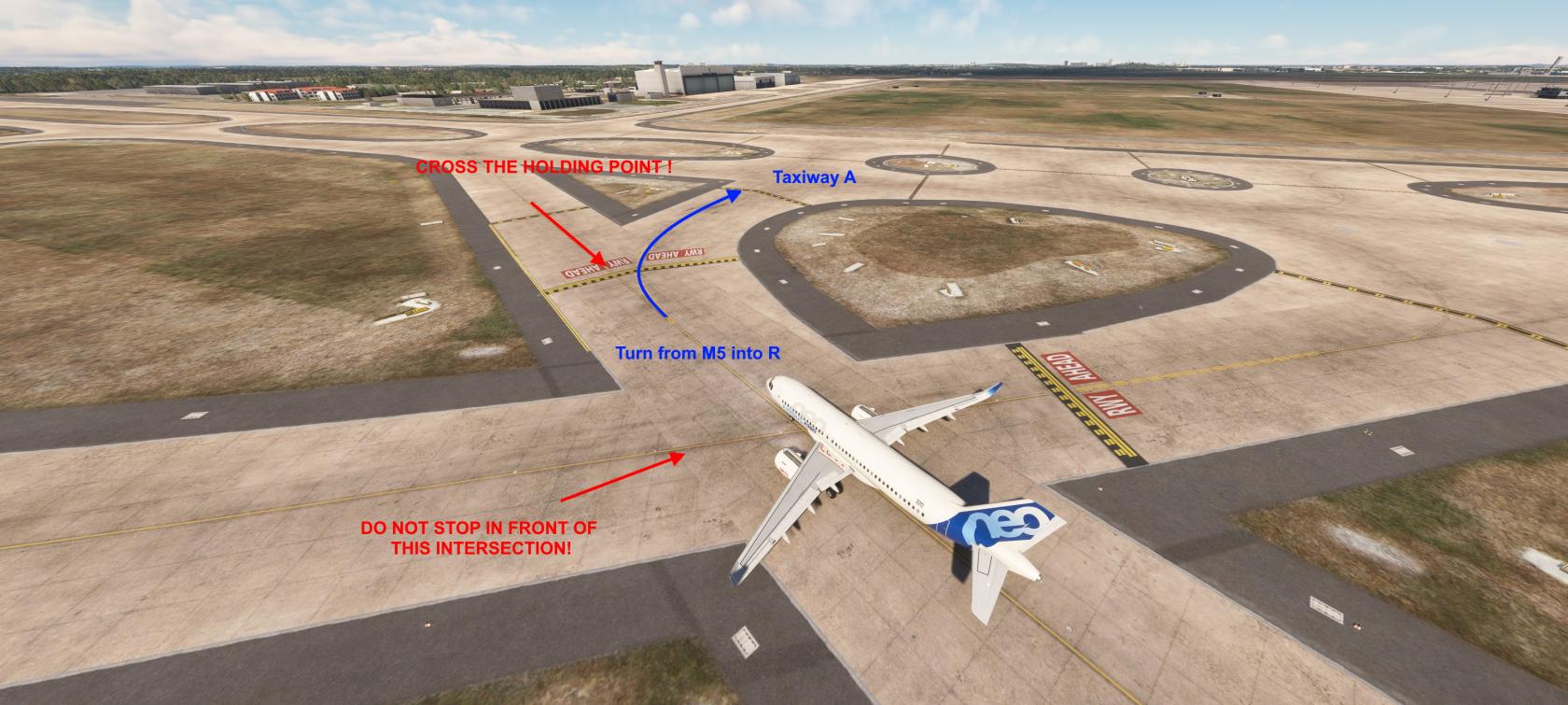
HoldPushback ShortProcedures
Berlin GroundApron will usuallyinstruct instructthe type of pushback which shall be used. This can be either a pushback with a turn to holda shortcertain of taxiway V1 for traffic taxiing from runway 07R/25L. Traffic from runway 07L/25R may be instructed to hold short of taxiway V3direction or V4.
Holding short of a taxiwaypushback meansstraight stoppingback. in front of this taxiway. Never join taxiway V1, V2, V3 or V4 without the explicit instruction from Berlin Ground or Berlin Apron.
Alternative Apron Entry
For traffic parking onin Apron C,B or D, Berlin GroundApron mayoften instructinstructs an alternative proceduretraffic to joinpush back onto taxi lines V1, V2 or VC. Please make sure that your pushback tool can perform the apronpushback manoeuveringonto area,the incorrect casetaxi trafficline. is blocking taxiway E. If instructed this procedure, do not join the apron via V1 or V2.you Pleaseare onlyunsure useif thisyou procedurecan whenpushback instructedcorrectly, by ATC!
Berlin Ground will usually use an instruction like the following:
"EJU32CM, taxi via B to the end, hold short of E.
Before reaching Taxiway E, where you'll then need to stop on Taxiway B, in front of the intersection, Berlin Ground will usually instruct the pilot toplease contact Berlin Apron.Apron Onlyimmediately enterand taxiwayexplain Ethe whensituation. instructed by Berlin Apron.
Taxi Procedures
Swing-Over
ATC will often issue "Swing-Over-Instructions" meaning that aircraft are supposed to directly switch taxiways from the present positions. This procedure will be applied between taxiways V1, V2 and VC.
Please don't follow any guidance lines to swing over between taxiways V1, V2 and VC. Instead, switch directly when instructed by Berlin Apron.
Note: This procedure will not be applied when Low Visibility Conditions exist.
Virtual Barrier
Due to an airport street crossing the apron, only VC can be used as a connection between taxiways V1-V3 and V2-V4. There is no direct connection between those taxiways!
ATC often issues so-called "swing over instructions" to clear aircraft onto VC. Please switch from taxiway V1 or V2 to VC immediately when instructed. There is no guidance line to switch between V1, V2 and VC. Aircraft shall self-manoeuvre on the apron.
Hold Shorts
Berlin Apron will usually instruct to hold short of taxiway B or taxiway C when leaving the Apron. Alternatively, the phrase "Hold Short of Entry North/South" may also be used, marking the end of the Apron.
Holding short of a taxiway/entry means stopping in front of this taxiway/entry. Never join taxiway B or C without the explicit instruction from Berlin Ground/Tower ("taxi via B/C").
High Intensity Runway Operations (HIRO)
Pilots shall ensure that they carry out these instructions without delay after receiving clearance up to the point of departure or take-off clearance in order to keep the RWY occupancy times to an absolute minimum. Cockpit checks should be concluded prior to taxiing onto the RWYs. Checks which still have to be carried out on the RWY shall be kept to a minimum.
Directions from aerodrome control to be ready for immediate take-off ("be ready for/expect immediate departure") will be issued if immediate compliance with the ensuing take-off clearance is ensured with as little RWY occupancy time as possible. Pilots unable to comply with this shall inform aerodrome control without delay.
Intersection Departures
Pilots shall be prepared for the following take-off runs available (TORA). If they require longer take-off runs or accept shorter ones, they shall communicate this when in contact with Berlin Ground.
| TYPE CLASS | RWY 24R | TORA | RWY 24L | TORA | RWY 06R | TORA | RWY 06L | TORA |
| HEAVY | L8 | 3600 m | M8 | 4000 m | M2 | 4000 m | L1 | 3600 m |
| MEDIUM JET | L7 | 3300 m | M7 | 2715 m | M3 | 2475 m | L2 | 3500 m |
| LIGHT JET, TURBOPROP | L6 | 2515 m | M6 | 2265 m | M3 | 2475 m | L3 | 2470 m |
| TYPE CLASS | RWY 24R | TORA | RWY 06L | TORA |
| HEAVY, MEDIUM JET | K6 | 3600 m | K1 | 3300 m |
| LIGHT JET, TURBOPROP | K5 | 3385 m | K2 | 2150 m |
Independent Parallel Departures
Simultaneous parallel departures in progress. Proceed exactly on the extended centerline until starting turns as published and remain on TWR frequency until further advised.
Any Deviation from the departure route will cause a conflict immediately. If required, Berlin Tower will issue heading instructions to establish separation again.

